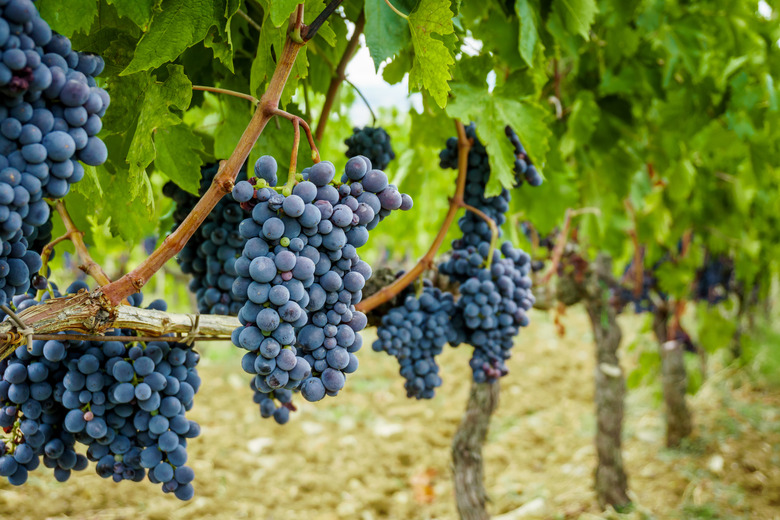The Best Fertilizer For Grapes
We may receive a commission on purchases made from links.
Cultivated for thousands of years, with countless varieties, versatile grapes (Vitis spp.) are grown for their fruit, leaves, and ornamentation. Grapes grow well, depending on variety, in U.S. Department of Agriculture plant hardiness zones 3 through 7. Many grapevines don't need to be fertilized as long as the soil is moderately fertile, but some grapes can use the boost of fertilizer occasionally.
Understanding Grape Fertilizer Needs
Understanding Grape Fertilizer Needs
Grapes typically aren't heavy feeders and often don't need fertilizer, especially once they're established. Only fertilize the vines when they need it — if they look healthy and are growing vigorously on their own, they likely don't need fertilizer. Grapevines that look weak might need a little fertilizer while plants with excessive growth, especially if it's mainly the leaves and wood, are likely receiving too much fertilizer. Feeding requirements for grapes can vary significantly based on the type of grapes, soil quality, weather, and other growing conditions.
Applying low-concentration fertilizers with a balanced mineral content when needed can produce grapevines with lush vegetation and juicy, sweet grapes. Grapes also require little or no watering after their first year. Only water grapes when you're fertilizing them or in drought conditions to keep the plants as healthy as possible.
When to Fertilize Grapes
When to Fertilize Grapes
The ideal time to fertilize grapes is in spring when new growth begins and again four weeks later. Never fertilize grapes after mid summer. Late fertilization can lead to late-season growth when the plant should be heading into a dormant stage. Late growth may weaken the grape vine's ability to survive the winter and affect its growth the following year. If you're planting new grapevines, you can add compost at the time of planting or fertilize two to three weeks after planting.
Soil testing through your local garden center or county extension can help you better understand the quality of the soil and the nutrient needs. Garden centers test the ratio of acidity and alkalinity in soils (their pH). Grapes grow best in soils with a pH balance of 5.5 to 6.5, which is slightly acidic.
Selecting a Fertilizer for Grapes
Selecting a Fertilizer for Grapes
Commercial fertilizers are a combination of nitrogen (N), phosphorus (P), potassium (K), and other less-critical supporting micro-nutrients and fillers. A commercial fertilizer label will indicate the N-P-K ratio, such as 24-8-16. This particular N-P-K ratio indicates that the product is 24 percent nitrogen, 8 percent phosphorus, 16 percent potassium, and 52 percent micro-nutrients and fillers, by volume.
Grapes prefer well-balanced formulas with relatively low percentages. Look for a label with an equal amount of each major mineral in percentages from 10 to 18 percent. For example, look for a label reading 10-10-10 or 12-12-12.
Applying the Fertilizer
Applying the Fertilizer
Check the label of your balanced fertilizer for guidance on how much fertilizer to apply. If your chosen fertilizer doesn't recommend how much to apply for grapes, err on the side of caution and use half the recommended amount for other fruit-bearing plants. As a general guideline, apply 1/4 cup for a newly planted grapevine with a follow-up application of the same amount after one month. In the second year, bump the amount up to 1 cup, apply 1 to 1-1/2 cups in year three, and apply 1 to 2 cups after that.
Apply the fertilizer around each plant approximately 12 to 18 inches away from the base of the plants. As your vines grow, increase the distance to 2 to 3 feet. After scattering fertilizer, gently rake it into the soil and water thoroughly. Avoid getting liquid and dry fertilizers on vines. Fertilizers containing iron may stain surfaces other than soil; avoid spilling them on concrete, driveways, and wood.
